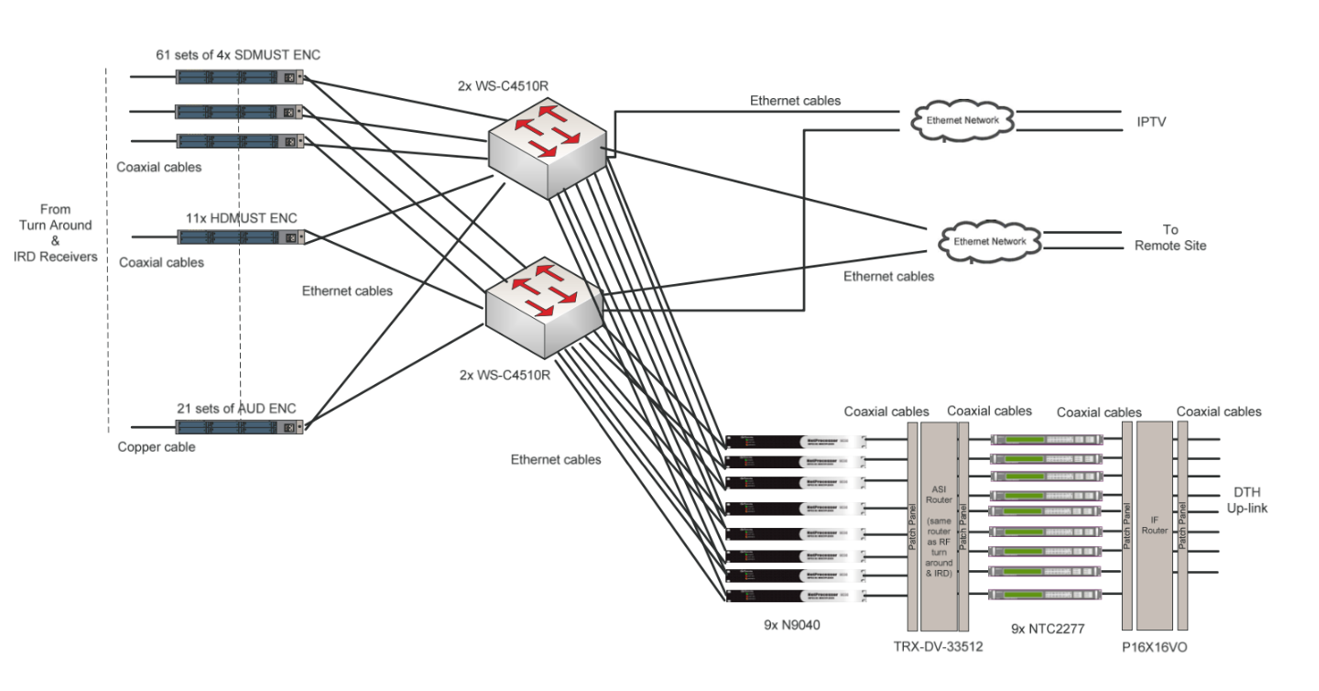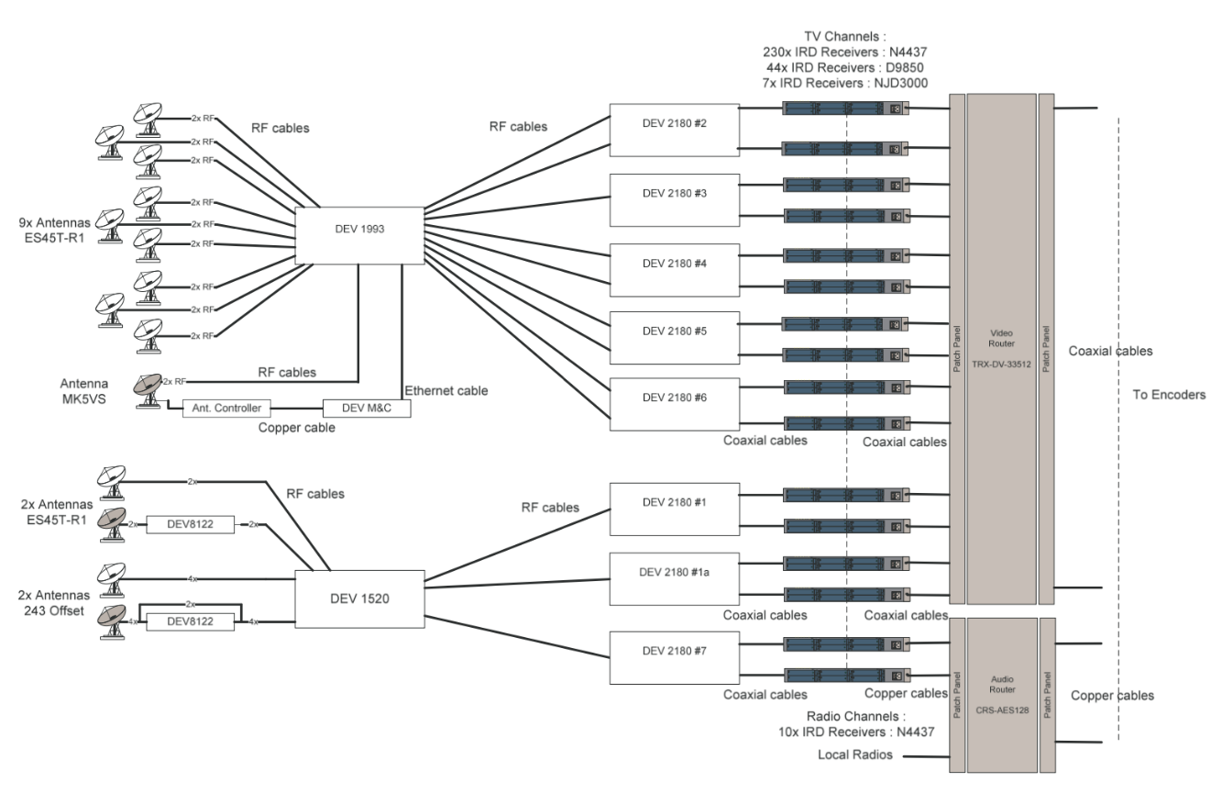solution Use Case
Signal Processing in DTH Headend

The purpose of DTH headend is to provide high-quality, cost-effective, and efficient content distribution to users worldwide. It enables content providers to meet the increasing demand for high-resolution content and customized viewing experience. DTH headend is now becoming the standard in content distribution and is rapidly gaining popularity globally for its numerous benefits, including:
- High-quality transmission
- Cost-effectiveness
- Customized viewing experience
- Accessibility
DTH headend consists of several components, each with a specific function. These include signal sources, dishes, LNBs, amplifiers, multiplexers, and modulators, which work together to provide a high-quality transmission. Modern DTH headend systems are more sophisticated and have additional components such as scramblers, conditional access systems, and Set-Top-Boxes (STB).
USE CASE DETAILS
 In DTH headend, signals from multiple sources such as satellites, cable networks, and terrestrial systems are received and processed. The essential signal processing equipment includes amplifiers, demodulators, and encoders. The output signals are then combined for transmission.
In DTH headend, signals from multiple sources such as satellites, cable networks, and terrestrial systems are received and processed. The essential signal processing equipment includes amplifiers, demodulators, and encoders. The output signals are then combined for transmission. Signal sources
Signal sources provide the signal source that is received and processed by the headend for transmission. They include satellites, terrestrial broadcasts, and cable networks.
 Amplifiers
AmplifiersAmplifiers are used to boost the received signals to ensure smooth processing. Their function ensures that the signals remain strong along the path from the source to the end user's TV screen.
Demodulators
Demodulators convert the modulated signals into a format that is readable by the receiving equipment. They decode the input signals, separate them, and forward them to the appropriate channels for processing.
Encoders
Encoders are used to convert the processed data into a format that can be transmitted using the required signal transmission protocol. This process enables the signal to be transmitted over long distances without quality loss.
Multiplexers
Multiplexers combine multiple channels into a single stream of data for transmission.
 Modulators
ModulatorsModulators modify the amplitude, frequency, and phase of the signals for transmission.
Encryption and decryption in DTH headend
Encryption is a critical process in DTH headend that ensures that unauthorized people cannot access the content. Decryption is the reverse of encryption and is done at the receiver's end to access the content. In DTH headend, encryption and decryption are done using sophisticated algorithms that ensure the safety and privacy of the content from unauthorized access.
Advantages of DTH headend over other modes of distribution
DTH headend has several advantages over other modes of distribution. It offers high-definition quality transmission, extensive signal coverage, and cost-effectiveness. DTH headend also has the ability to offer extra services such as an electronic programming guide, video-on-demand, and pay-per-view services. Moreover, DTH headend can offer a more customized viewing experience that can cater to the end user’s preferences.